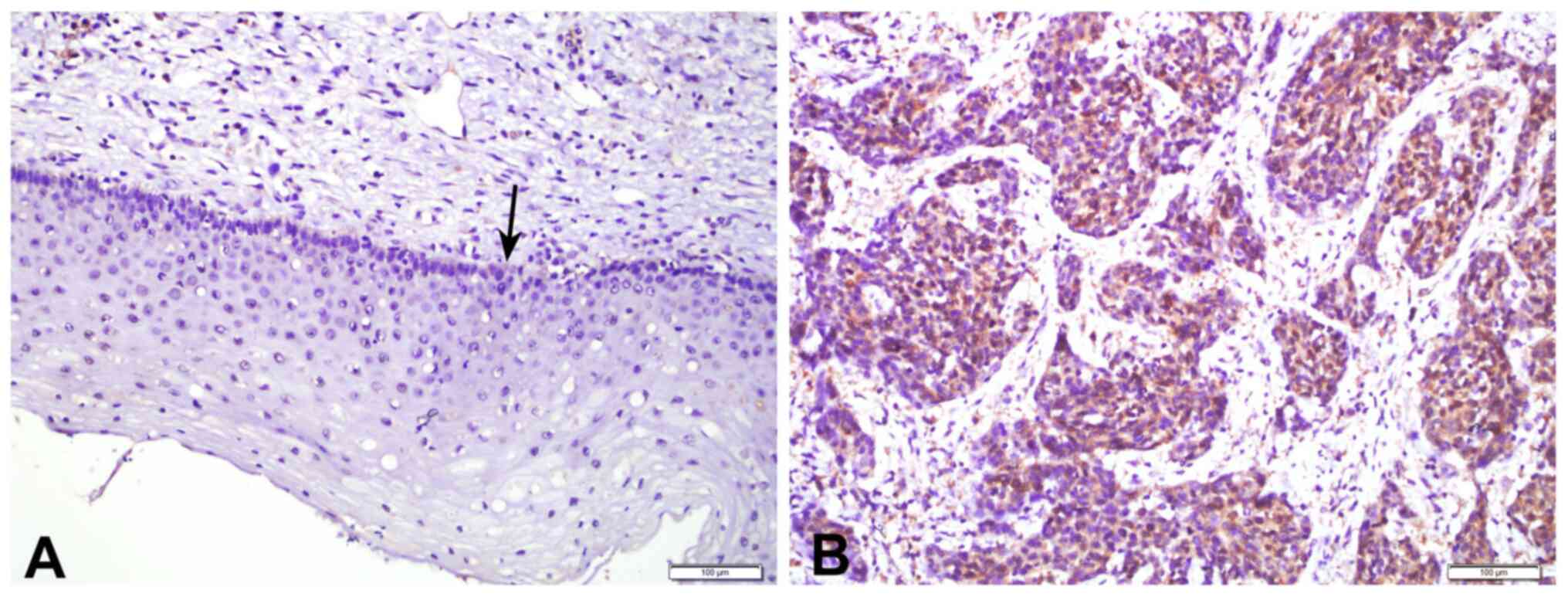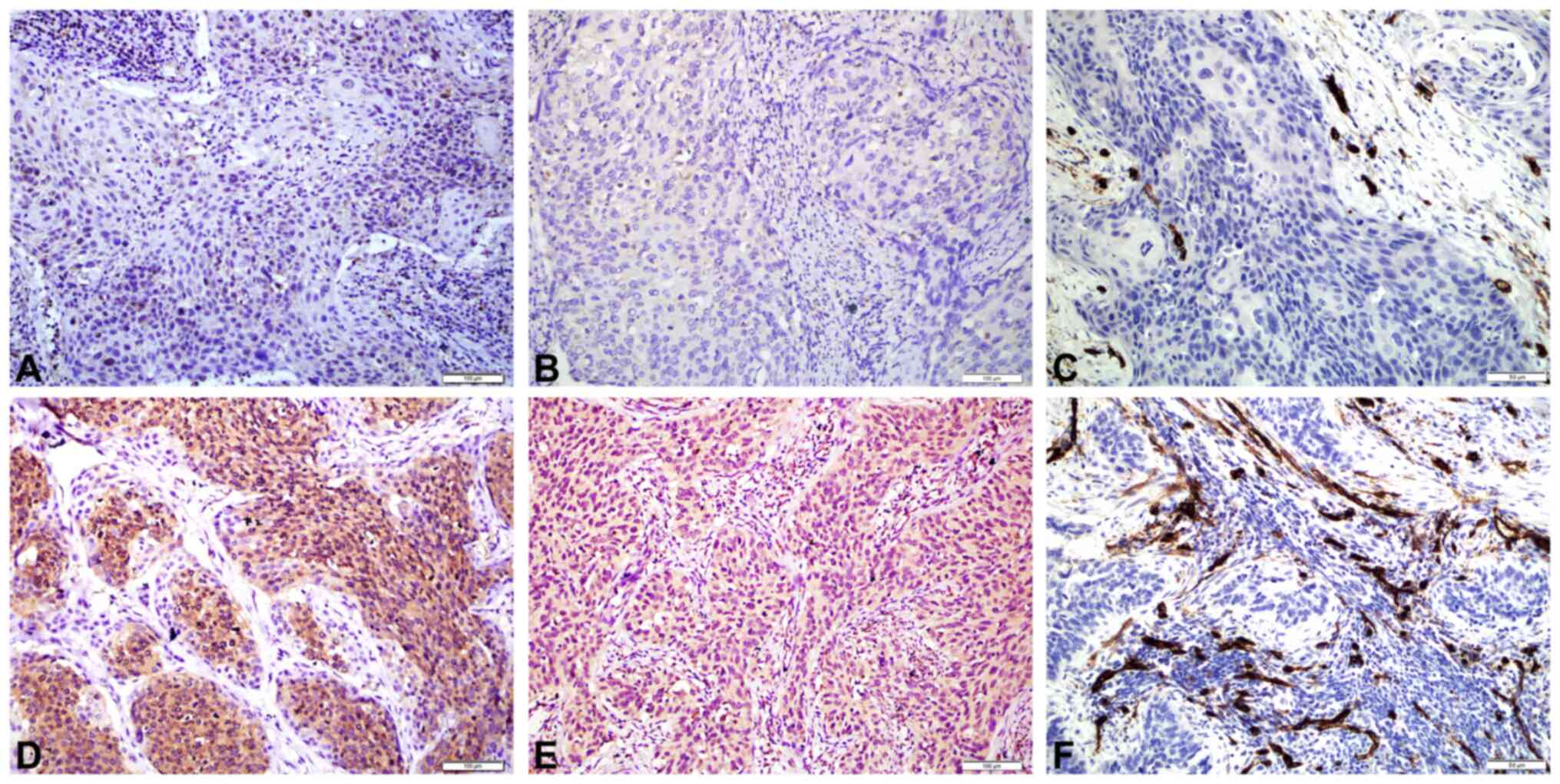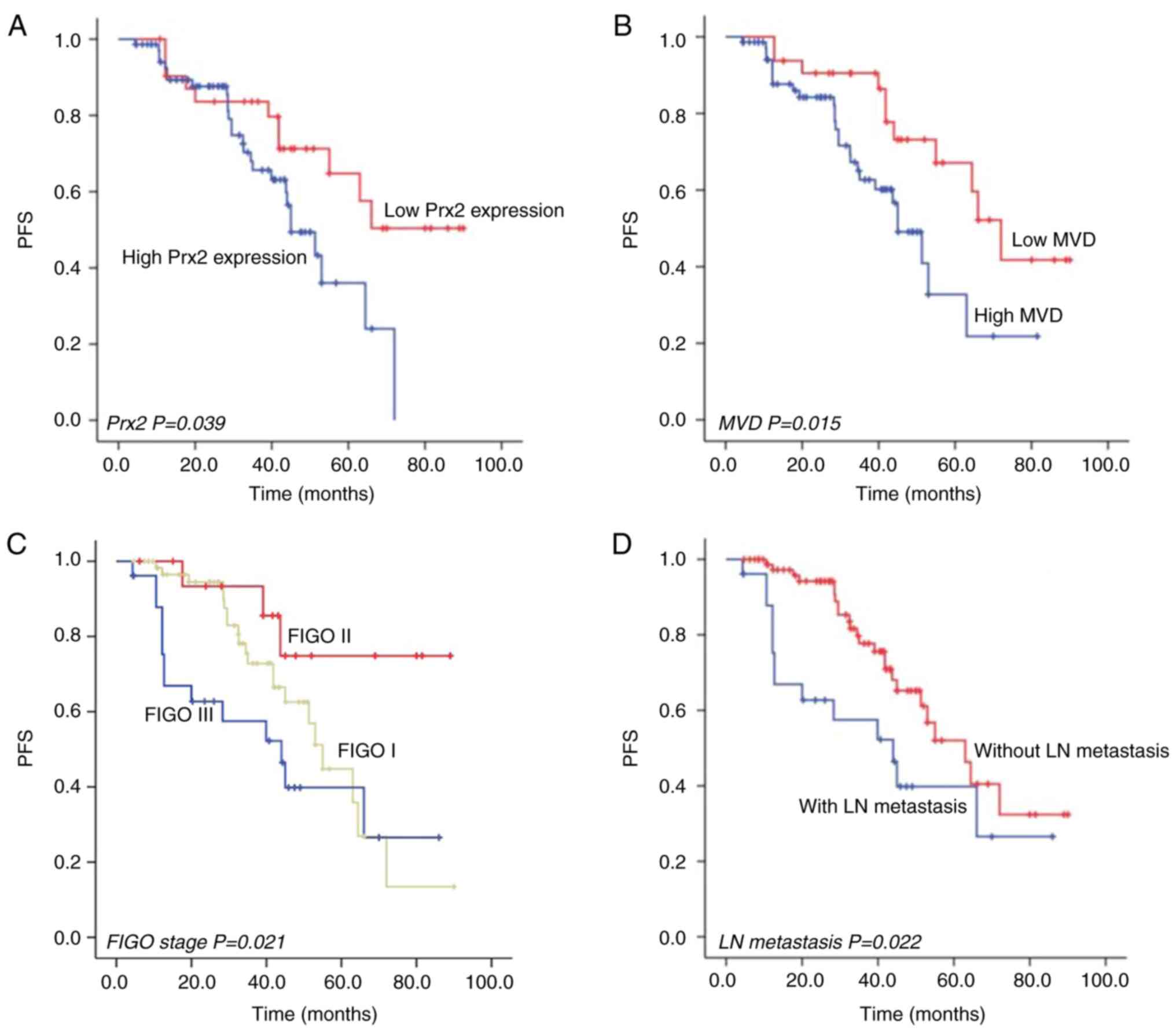Peroxiredoxin 2 as a potential prognostic biomarker associated with angiogenesis in cervical squamous cell cancer
- Authors:
- Published online on: May 16, 2024 https://doi.org/10.3892/ol.2024.14461
- Article Number: 328
-
Copyright: © Zhao et al. This is an open access article distributed under the terms of Creative Commons Attribution License.
Metrics: Total
Views: 0 (Spandidos Publications: | PMC Statistics: )
Total PDF Downloads: 0 (Spandidos Publications: | PMC Statistics: )
Abstract
Peroxiredoxins (Prxs) are a ubiquitously expressed family of antioxidant enzymes that either facilitate or inhibit tumorigenesis, depending on the cancer type and Prx isoform. Prx2 is a typical Prx that has a dual role in tumorigenesis and tumor progression. However, the expression of Prx2 and its precise role in cervical cancer remains to be elucidated. Therefore, the present study aimed to investigate the expression of Prx2 and its association with the progression and prognosis of cervical squamous cell cancer (CSCC). In the present study, the clinicopathological data of 105 patients diagnosed with CSCC were collected from the medical record system at Jingzhou Central Hospital, Tongji Medical College of Huazhong University of Science and Technology (Jingzhou, China). Prx2 protein was also detected in 105 CSCC tissues and 40 adjacent peri‑tumoral tissues by immunohistochemical staining. The relationships between Prx2 expression and clinicopathological features, vascular endothelial growth factor A (VEGF‑A) expression and micro‑vessel density (MVD) in CSCC were then analyzed. Progression‑free survival (PFS) was also assessed using both univariate and multivariate analyses. The results of the present study demonstrated that the expression of Prx2 was upregulated in CSCC tissues compared with the adjacent peri‑tumoral tissues (P<0.001). In addition, higher Prx2 expression was associated with greater depth of stromal invasion (P=0.023) and positive lymph vascular space invasion (P=0.044), while the Prx2 expression level was not associated with age, tumor size, histological grade, lymph node (LN) metastasis or International Federation of Gynecology and Obstetrics (FIGO) stage (all P>0.05). Furthermore, increased Prx2 expression was associated with high MVD (P=0.016), while expression of VEGF‑A was not associated with Prx2 expression (P>0.05). Kaplan‑Meier analysis showed that patients with high Prx2 expression (log‑rank test, P=0.039), high MVD (log‑rank test, P=0.015), a higher FIGO stage (log‑rank test, P=0.021) and LN metastasis (log‑rank test, P=0.022) had a shorter PFS time than patients with low Prx2 expression, low MVD, a lower FIGO stage and without LN metastasis, respectively. Cox proportional hazard regression analysis revealed that expression of Prx2 [hazard ratio (HR), 2.551; 95% confidence interval (CI), 1.056‑6.162; P=0.037], MVD (HR, 2.436; CI, 1.034‑5.735; P=0.042) and FIGO stage (HR, 1.543; CI, 1.027‑2.319; P=0.037) were independent factors for PFS time. In conclusion, the results of the present study suggested that Prx2 could act as a potential biomarker for predicting CSCC progression and prognosis and could be a novel target for antiangiogenic therapy of CSCC.












